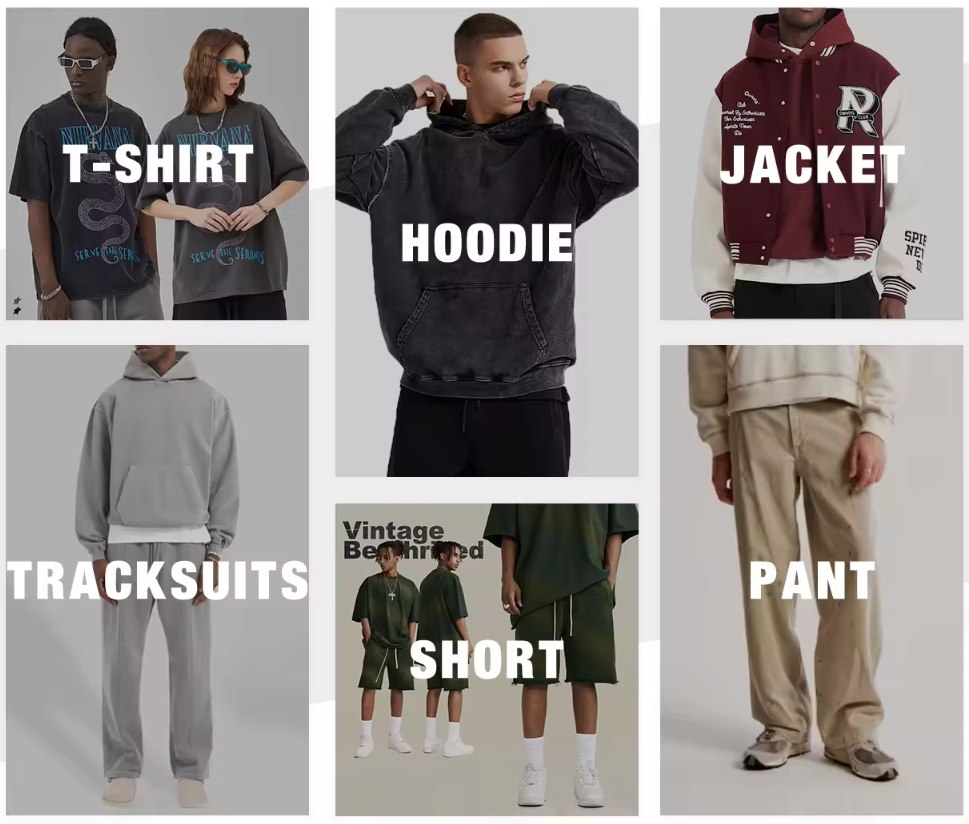Some common materials for clothing have wearing experience characteristics
Some common materials for clothing have wearing experience characteristics.according to men acid wash t shirt Industry veterans said that its development will still be in a good situation. https://leduogarment.com
Cotton:
Soft and comfortable: It feels gentle when in contact with the skin and does not cause irritation.
Good breathability: It helps sweat evaporate and keeps the skin dry, suitable for wearing in hot weather.
High hygroscopicity: It can absorb sweat discharged from the body, but it may not dry quickly in a humid environment.
Easy to wrinkle: It needs to be ironed frequently to keep it flat.
Example: A pure cotton T-shirt is very comfortable to wear in the summer, but it may have obvious wrinkles after a day of activities.
Linen:
Excellent breathability: It is more breathable than cotton and gives a refreshing feeling.
Good hygroscopicity: It can absorb sweat quickly.
Hard texture: It may be a little rough when worn for the first time, but it will gradually soften with the increase in the number of washes.
Easy to wrinkle: And wrinkles are more difficult to smooth out than cotton clothing.
Example: Linen shirts can provide good ventilation in hot summer, but require careful care to reduce wrinkles.
Silk:
Smooth and soft: It feels extremely delicate and gives a luxurious feeling.
Lustrous: makes clothing look high-end and gorgeous.
Good breathability: cool and comfortable to wear.
High maintenance requirements: demanding washing and storage conditions, easy to damage.
Example: Silk dresses can show elegance when worn on important occasions, but care should be taken to avoid scratches and use special detergents.
Wool:
Excellent warmth retention: especially suitable for wearing in cold seasons.
Soft: but may feel slightly itchy, especially for sensitive skin.
Good elasticity: can maintain the shape of clothing.
Easy to shrink: special care is required when washing.
Example: Wool coats can effectively protect against the cold in winter, but may become smaller after washing.
Cashmere:
Extremely soft: almost no itching, very skin-friendly.
Excellent warmth retention: lighter and warmer than wool.
Expensive: a high-end clothing material.
Careful care is required: prone to pilling and wear.
Example: A cashmere sweater can provide unparalleled warmth and comfort, but it needs to be maintained with special care products.
Polyester:
Highly wrinkle-resistant: Less prone to wrinkles, less frequent ironing required.
Good abrasion resistance: Long-lasting.
Poor breathability: May feel stuffy in hot weather.
Prone to static electricity: May attract dust and hair.
Example: A sports jacket made of polyester is easy to care for, but may feel stuffy after long periods of exercise.
Nylon:
High strength: Suitable for garments that require durability, such as sports bras.
Good elasticity: Has good stretchability.
Fair breathability: Not as comfortable as natural fibers.
Example: A swimsuit made of nylon provides good support when in the water, but may be uncomfortable to wear for too long.
Spandex:
Excellent elasticity: Provides good stretch and fit.
Often blended with other fibers: Enhances the elasticity and comfort of the garment.
Limited breathability and moisture absorption when used alone.
Example: Tights with a high spandex content are comfortable and allow for ease of movement, but may not be very breathable in hot weather.